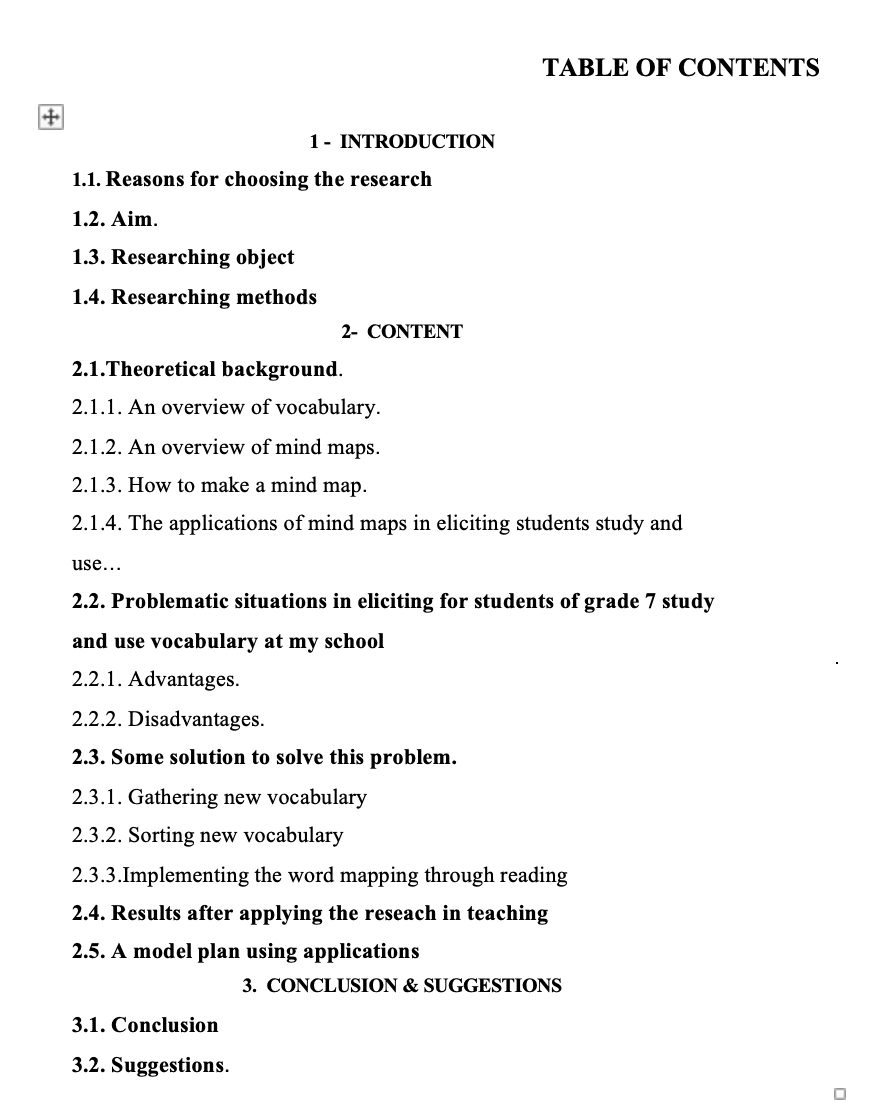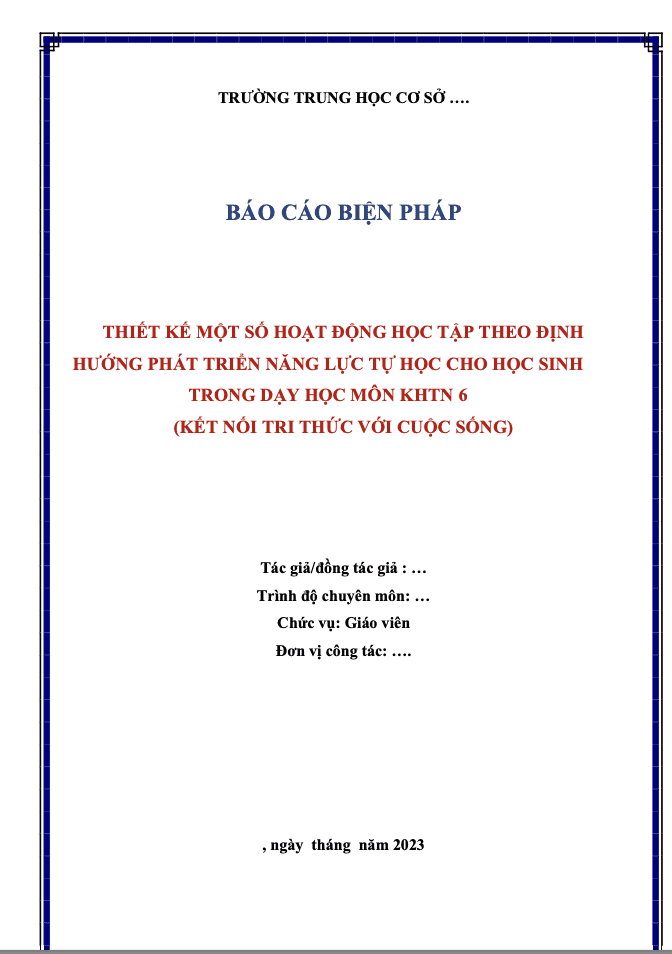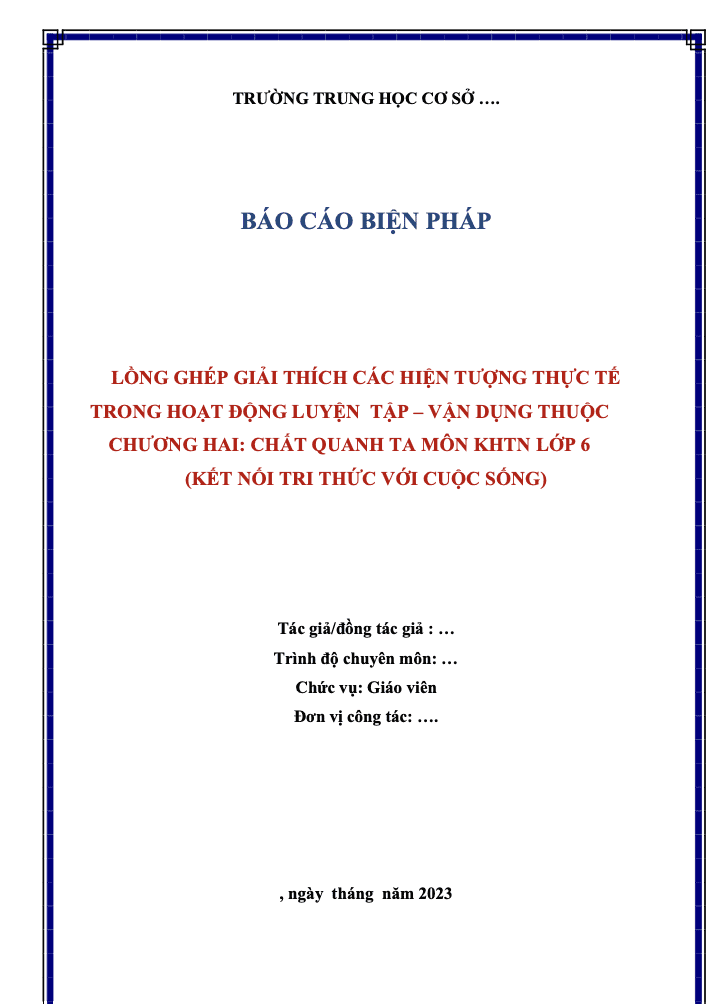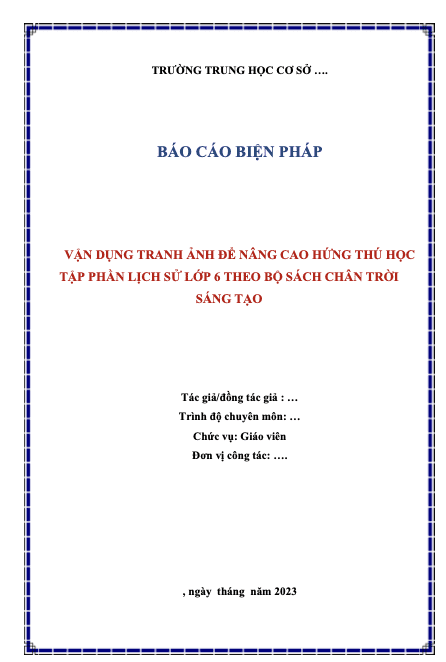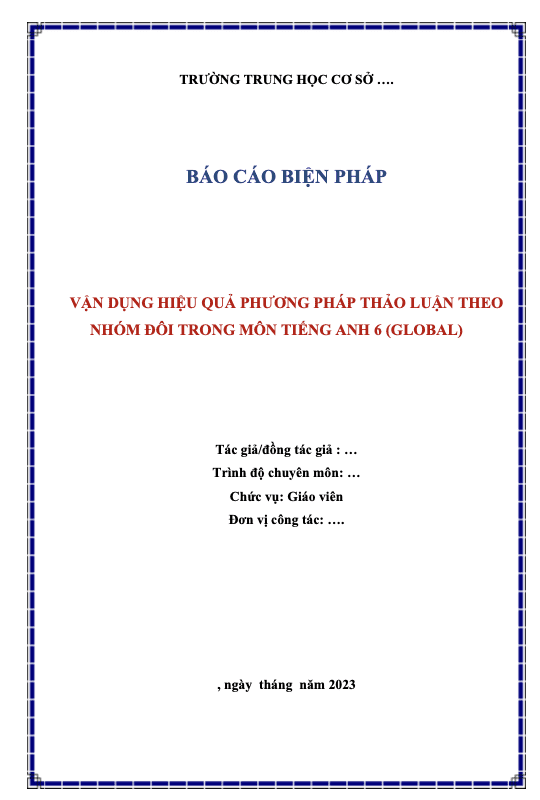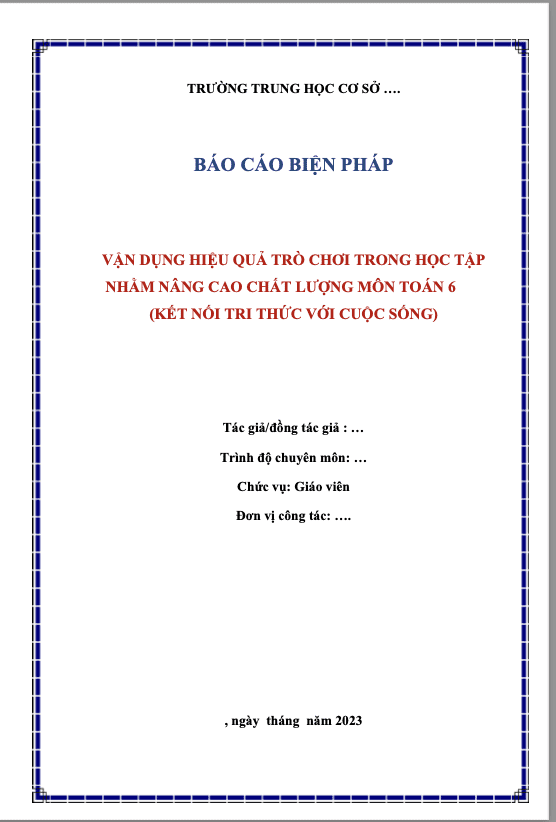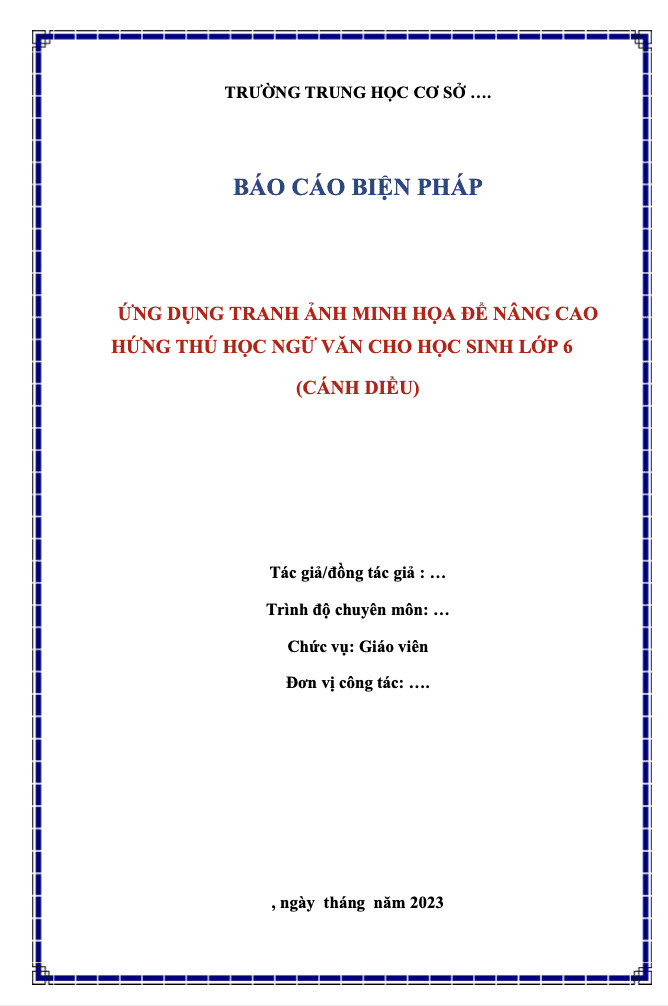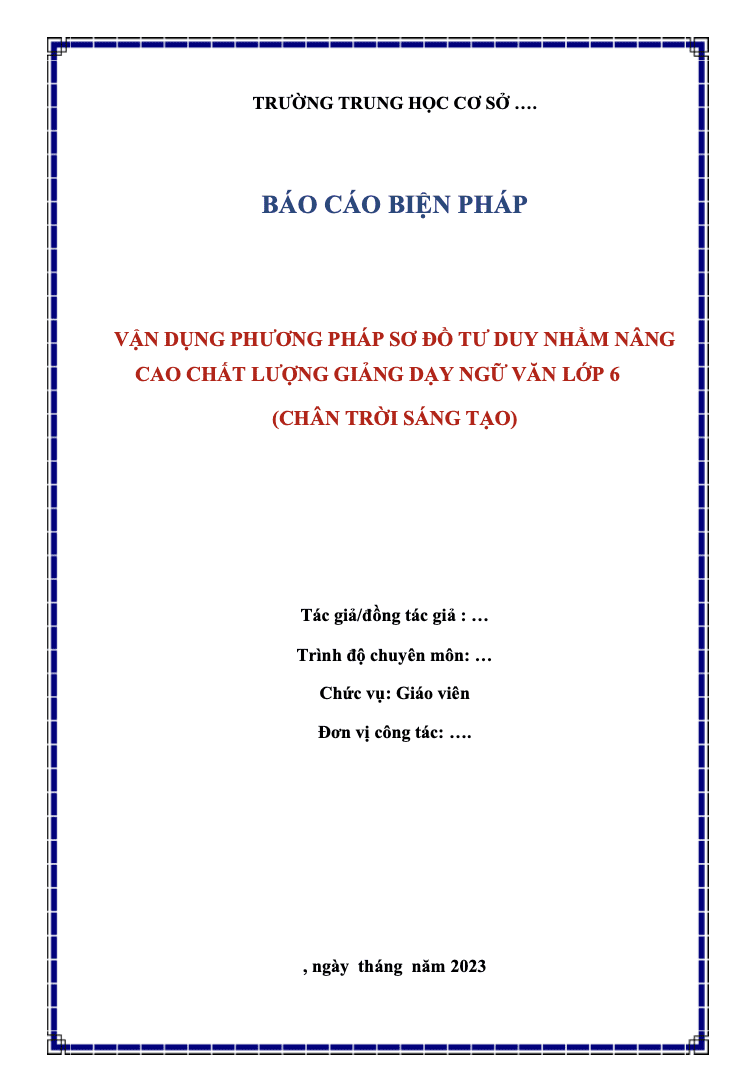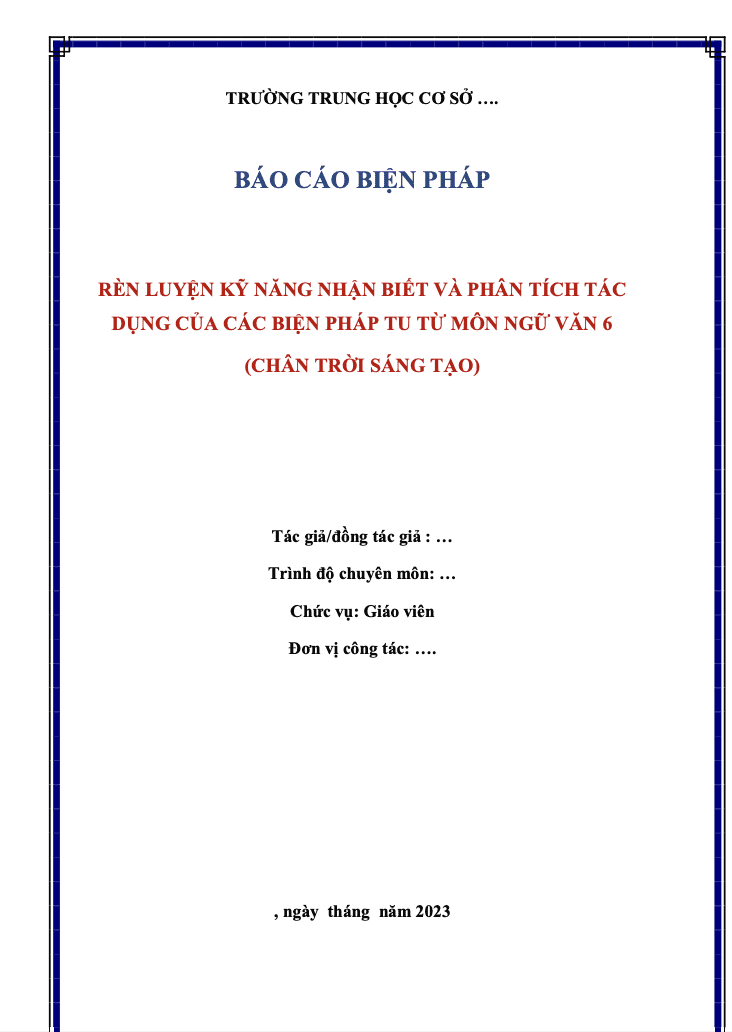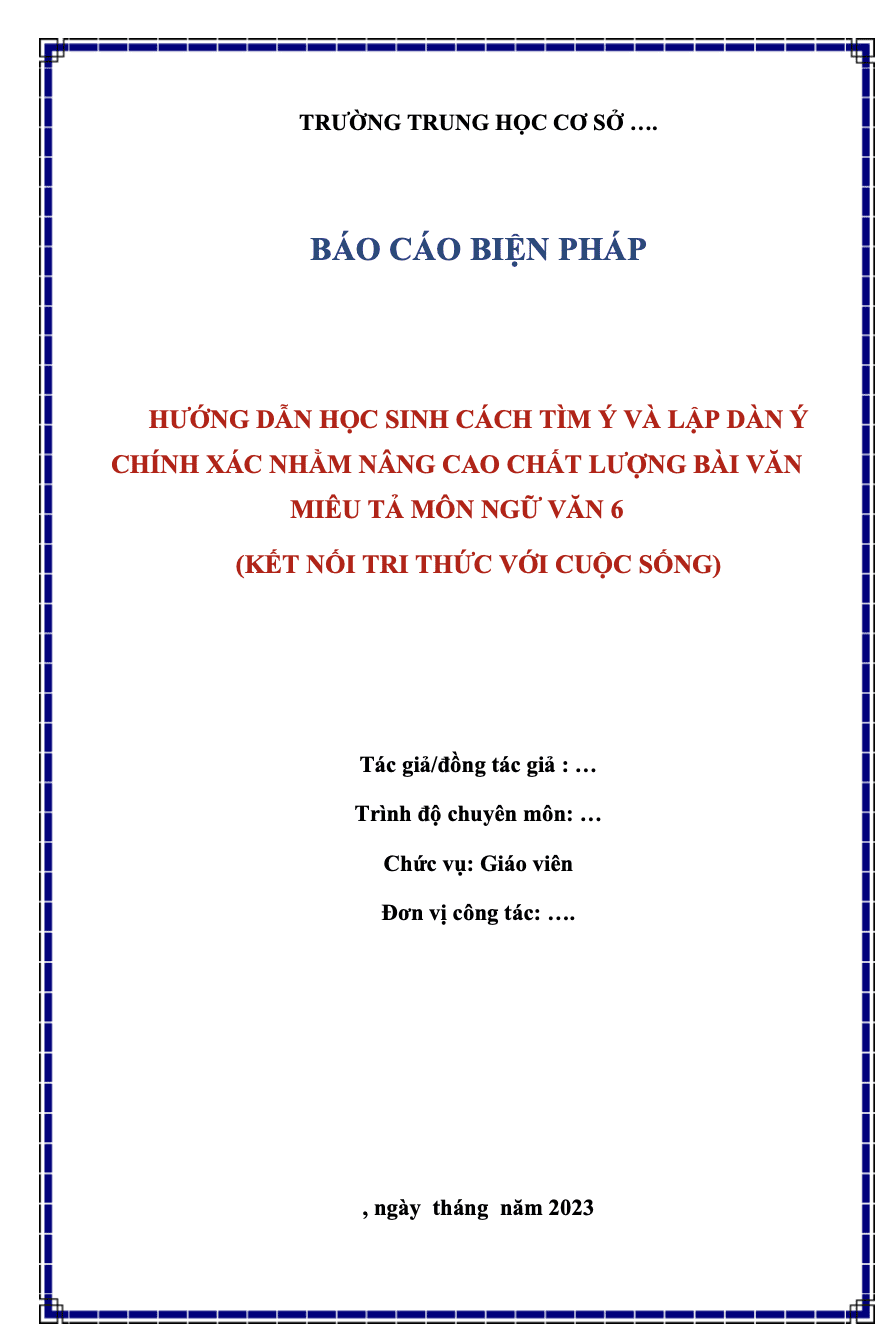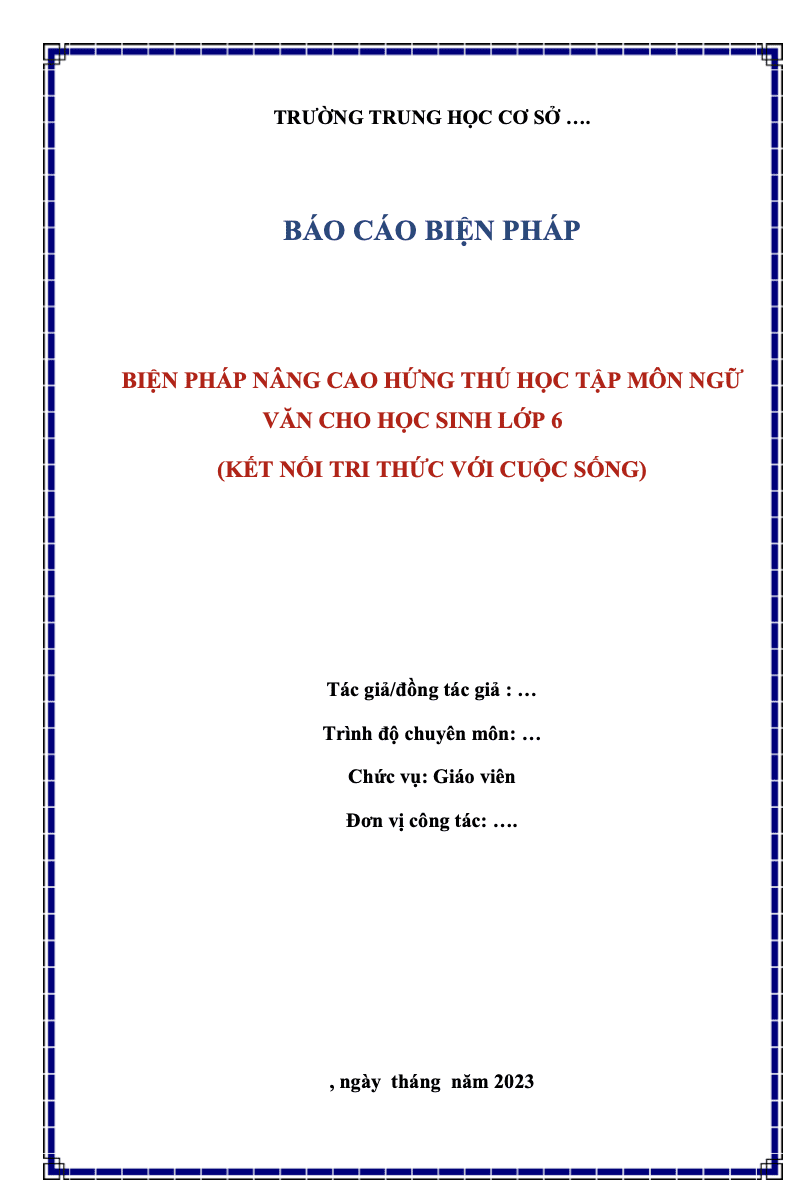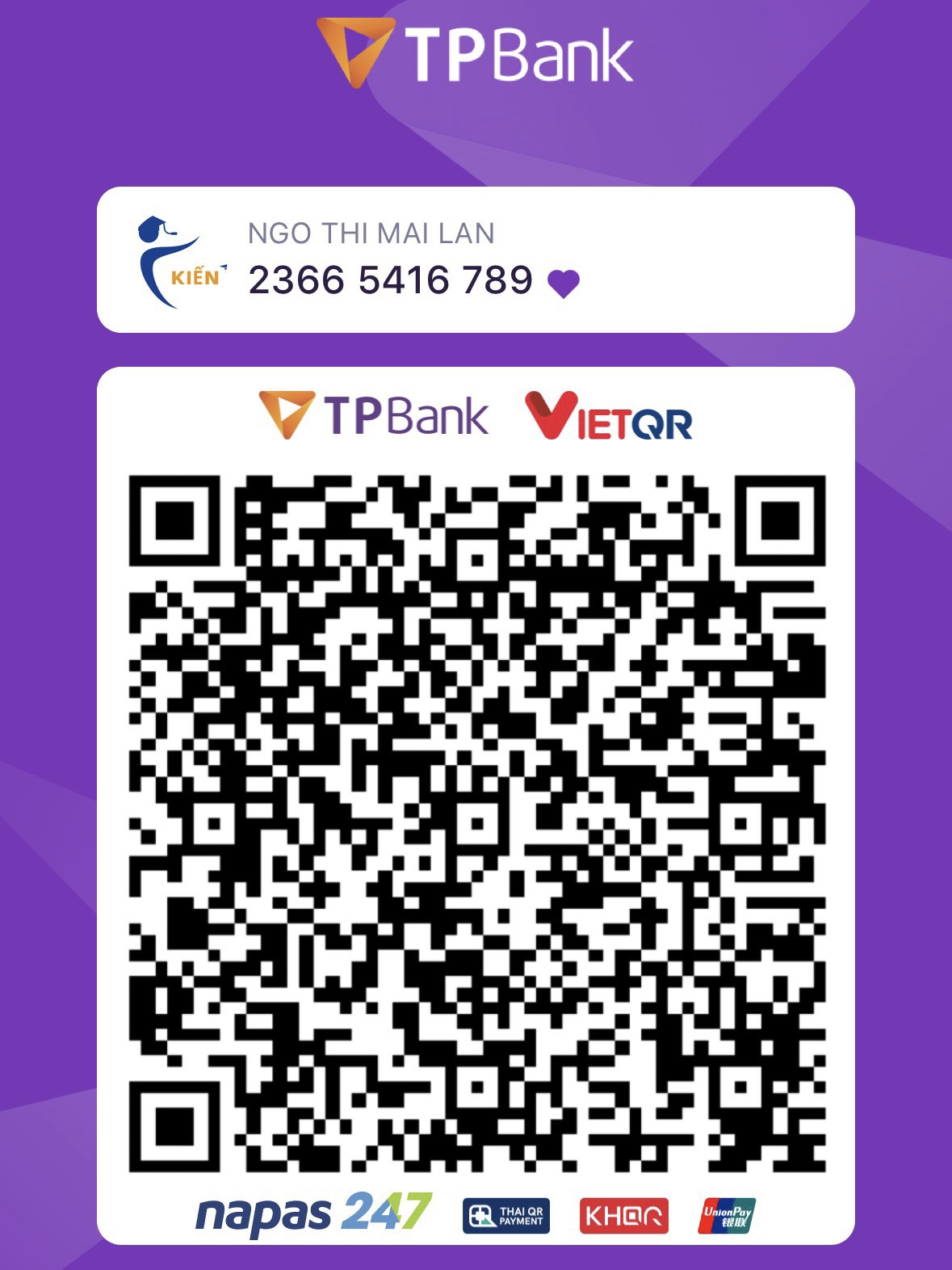SKKN Some experiences in eliciting students of grade 7 study and use vocabulary effectively by using mind maps” (New English Textbook)
- Mã tài liệu: BM7114 Copy
Giá:
| Cấp học: | THCS |
| Môn: | Tiếng anh |
| Lớp: | 7 |
| Bộ sách: | |
| Lượt xem: | 1306 |
Sáng kiến kinh nghiệm “SKKN Some experiences in eliciting students of grade 7 study and use vocabulary effectively by using mind maps” (New English Textbook)” triển khai gồm các biện pháp nổi bật sau:
1. Gathering new vocabulary
2. Sorting new vocabulary
3. Implementing the word mapping through reading
Mô tả sản phẩm
- INTRODUCTION
1.1. Reasons for choosing the research
English is an international language which has developed quickly. It is a subject that features regularly on study timetables all over the world. Every country does not want to be isolated in international communication, so it puts English in curriculum of their education at programme. In Vietnam, English is a compulsory subject at schools and it has recently been chosen as a compulsory subject in the national examination for the General Certificate of Secondary Education or GCSE for short. Besides the four skills, having a good knowledge of vocabulary is an important element in second language acquisition. By learning new words, learners can enhance their listening, speaking, reading and writing as well as improve comprehension and production in second language. Vocabulary learning strategies are one part of language learning strategies which in turn are part of general learning strategies. One of the strategies to teach vocabulary is to apply images and review well in a structured way. Using mind maps is considered to be one of the techniques or activities which can be used in eliciting students how to study and use vocabulary more effectively.
For all the reasons mentioned above, I have decided to choose ” Some experiences in eliciting students of grade 7 study and use vocabulary effectively by using mind maps ” (New English Textbook) ” as the topic of my experience initiative.
1.2. Aim
The study is aimed at finding the ways in eliciting students to study and use vocabulary by using mind maps for students of grade 7 at ……… secondary school effectively with the textbook English 7.
1.3. Researching object
Some experiences in eliciting students of grade 7 study and use vocabulary effectively by using mind maps ” (New English Textbook) ”
1.4. Researching methods
The writer did some steps to do this research, they are as follows;
1.4.1. Researching method to construct the theoretical basic.
1.4.2.Surveying method the reality relating to do the problem.
1.4.3. Method of collecting the data through the test and posttest;
1.4.4 . Method of analyzing the data;
1.5. New points of my experience initiative:
The research will be useful to students, teachers and researchers in the field of English language teaching and learning: students can use mind mapping (MM) model to study and use vocabulary more quickly and more effectively; teachers can understand more about the MM model and use it to teach vocabulary more effectively in their lessons; and researchers will use the study as a reliable source of reference in their research.
- CONTENT
2.1. Theoretical background:
2.1.1. An overview of vocabulary.
Vocabulary is a list of words in a language with their meaning (Hornby, 2000:1331). Saleh (1997:60) states that vocabulary items fall into two principle categories, they are; (1) concrete words and (2) abstract words.
2.1.1.1. Concrete Words
Saleh (1997:60) states that a concrete word is a word that the meaning can be perceived through one or more of the five senses. The meaning of concrete word can be pointed out by means of Audio Visual Aids (AVA), like realia (real things), miniatures, pictures, and demonstration.
2.1.1.2. Abstract Words
Saleh (1990:60) states that an abstract word is a word that the meaning of which cannot generally be grasped by virtue of the five senses. The notion of abstract word are like “thank” and “enjoy”, its can be shown by circumlocution or translation.
2.1.1.3. Strategies of eliciting students how to study and use vocabulary.
* Stages and techniques in eliciting students how to study and use vocabulary
- Presenting
At this stage, the teacher presents the new words and the techniques are often used such as translation, real things, pictures, actions /gestures, definitions, situations/ examples.
b.Practicing
At this stage, the students are made to practice the new words. The techniques are
often used such as identifying, selecting, matching, sorting, ranking and sequencing.
c.Consolidating and revising
At this stage, the techniques are often used such as ordering, rub out and remember, networks, bingo, wordstorm, slap the board, matching, noughts and crosses, what and where, jumbed words, guess the pictures
2.1.1.4. Vocabulary in English textbook grade 7.
The vocabulary in English 7 is continued to present and build up according to topics. That is why using mind maps is believed to be a good way to help students not only review the learned words but also learn the new ones.
2.1.2. An overview of mind maps.
2.1.2.1. Definition
Buzan states that a mind map is a powerful graphic technique which provides a universal key to unlock the potential of the brain. It is a visual map of ideas, laid out in a radial format around a central thought and it involves a unique combination of imagery, colour and visual-spatial arrangement which is proven to significantly improve recall when compared to conventional methods of note-taking and learning by rote. It needs imagination and association to activate our brain in remembering something.
Based on DePotter and Hernacki as translated into English (in Abdurrahman, 2008:153), “Mind mapping is the use of whole brains technique by using the visualization and other graphic infrastructure to make an impression”. Besides, mind mapping is one of techniques which can make the students more enjoyable and interesting in studying vocabulary.
According to Martin as translated into English (in Trianto, 2009:158) mind mapping is a concrete graphic illustration which indicates how a single concept related to other concept in the same categories. Mind mapping is a pattern which at least consists of picture, symbol and colour that will not just help the students to understand the vocabulary knowledge but also make the students feel good, enjoyable and attract their brain which at last leads them to have interest in mastery vocabulary knowledge.
2.1.2.2. Classifications
Trianto (2009:160) describes that mind mapping can be distinguished into four kinds, namely; (1) network tree, (2) event chain, (3) cycle concept map, and (4) spider concept map.
2.1.2.2.1. Event Chain
TÀI LIỆU LIÊN QUAN
200.000 ₫
- 5
- 552
- 1
- [product_views]
200.000 ₫
- 8
- 524
- 2
- [product_views]
200.000 ₫
- 0
- 458
- 3
- [product_views]
200.000 ₫
- 0
- 494
- 4
- [product_views]
200.000 ₫
- 8
- 415
- 5
- [product_views]
200.000 ₫
- 6
- 582
- 6
- [product_views]
200.000 ₫
- 6
- 539
- 7
- [product_views]
200.000 ₫
- 5
- 412
- 8
- [product_views]
200.000 ₫
- 3
- 572
- 9
- [product_views]
200.000 ₫
- 0
- 517
- 10
- [product_views]

